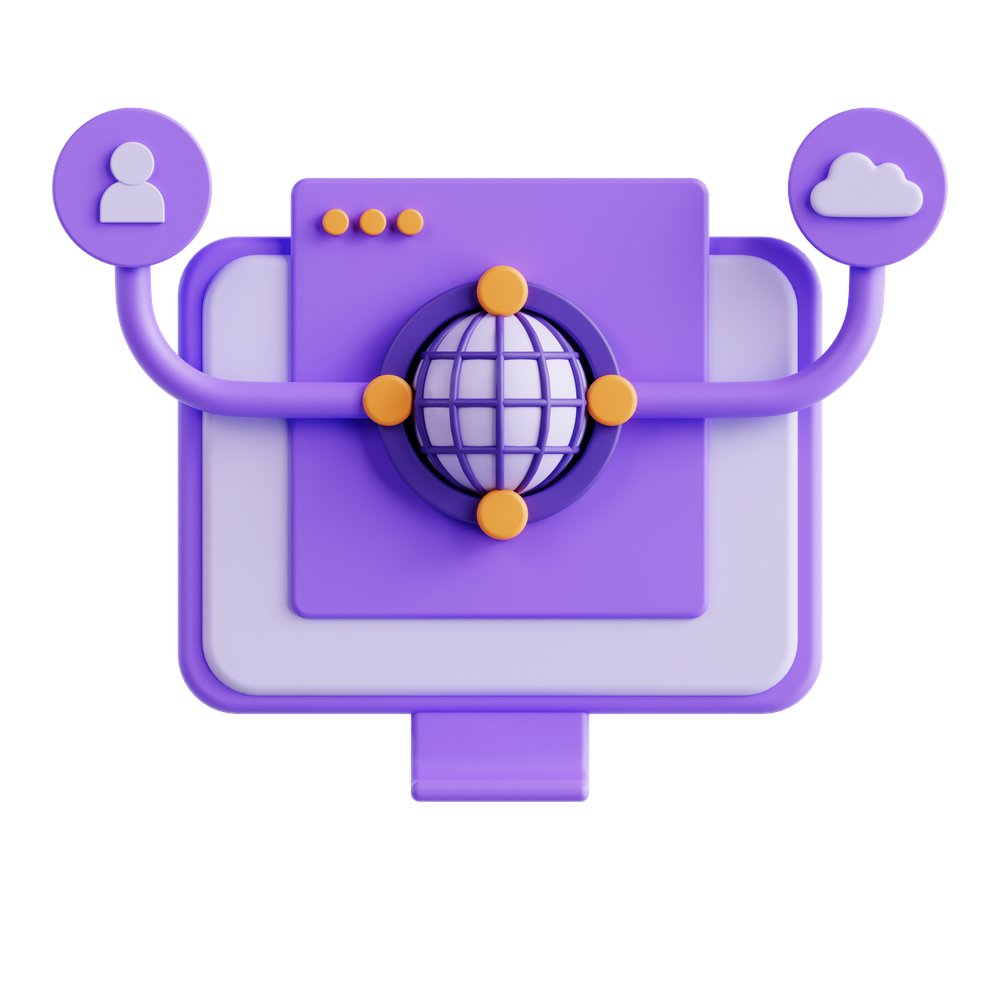1/20: 🔗 Understanding IP Addresses
An IP address is like a phone number for devices on a network. For example, 192.168.1.1 is a common one used for routers. Each device needs a unique IP to communicate effectively. #Networking101
An IP address is like a phone number for devices on a network. For example, 192.168.1.1 is a common one used for routers. Each device needs a unique IP to communicate effectively. #Networking101

2/20: 🌐 Subnetting Simplified
Subnetting divides a network into smaller segments. Imagine a city area code (e.g., 212) dividing into neighborhoods. 192.168.1.0/24 means 256 addresses in the same neighborhood. #Subnetting
Subnetting divides a network into smaller segments. Imagine a city area code (e.g., 212) dividing into neighborhoods. 192.168.1.0/24 means 256 addresses in the same neighborhood. #Subnetting

3/20: 📨 Ports and Protocols
Ports are like doors to your device, and protocols are the rules for communication. Port 80 is often used for web traffic (HTTP). Think of it as a specific service's entrance. #PortsAndProtocols
Ports are like doors to your device, and protocols are the rules for communication. Port 80 is often used for web traffic (HTTP). Think of it as a specific service's entrance. #PortsAndProtocols

4/20: 🚀 The OSI Model
The OSI model has 7 layers. Imagine sending a letter: You write it (App), put it in an envelope (Transport), and send it (Network). It's received, opened, and read in reverse order. #OSIModel
The OSI model has 7 layers. Imagine sending a letter: You write it (App), put it in an envelope (Transport), and send it (Network). It's received, opened, and read in reverse order. #OSIModel

5/20: 🌐 Routing Basics
Routers are like traffic cops on the internet. They direct data to its destination. Traceroute is your GPS; it shows each hop along the way. #Routing
Routers are like traffic cops on the internet. They direct data to its destination. Traceroute is your GPS; it shows each hop along the way. #Routing

6/20: 🤝 MAC Addresses
MAC addresses are unique hardware IDs for devices. Think of them as VIN numbers for cars. They're used at the data link layer (Layer 2) of the OSI model. #MACAddress
MAC addresses are unique hardware IDs for devices. Think of them as VIN numbers for cars. They're used at the data link layer (Layer 2) of the OSI model. #MACAddress

7/20: 🌐 DHCP: Dynamic Host Configuration Protocol
DHCP assigns IP addresses dynamically. It's like a guest list at a party; you get a unique seat every time you join. #DHCP
DHCP assigns IP addresses dynamically. It's like a guest list at a party; you get a unique seat every time you join. #DHCP

8/20: 🌐 DNS: Domain Name System
DNS translates human-readable domain names (like google[dot]com) into IP addresses (like 8.8.8.8). It's like a phonebook for the internet. #DNS
DNS translates human-readable domain names (like google[dot]com) into IP addresses (like 8.8.8.8). It's like a phonebook for the internet. #DNS

9/20: 🌐 NAT: Network Address Translation
NAT allows multiple devices to share one public IP address. It's like a receptionist directing calls to different extensions inside a building. #NAT
NAT allows multiple devices to share one public IP address. It's like a receptionist directing calls to different extensions inside a building. #NAT

10/20: 🔒 Firewalls
Firewalls protect networks by filtering traffic. Imagine a bouncer at a club entrance; only allowed guests get in. #Firewall
Firewalls protect networks by filtering traffic. Imagine a bouncer at a club entrance; only allowed guests get in. #Firewall

11/20: 🔄 Load Balancing
Load balancers distribute network traffic across multiple servers. Picture a traffic cop directing cars to different lanes to prevent congestion. #LoadBalancing
Load balancers distribute network traffic across multiple servers. Picture a traffic cop directing cars to different lanes to prevent congestion. #LoadBalancing

12/20: 💼 VPN: Virtual Private Network
VPNs create secure, encrypted tunnels over public networks. Think of it as a private road inside a busy city to keep your data safe. #VPN
VPNs create secure, encrypted tunnels over public networks. Think of it as a private road inside a busy city to keep your data safe. #VPN

13/20: 📡 Wireless Networks
Wi-Fi operates on radio frequencies. Just like tuning a radio to a station (channel), devices connect to a specific Wi-Fi network. #Wi-Fi
Wi-Fi operates on radio frequencies. Just like tuning a radio to a station (channel), devices connect to a specific Wi-Fi network. #Wi-Fi

14/20: 💼 Ethernet Cables
Ethernet cables physically connect devices in a wired network. Think of them as highways for data traffic. Cat5e, Cat6, Cat7 are like different road quality levels. #Ethernet
Ethernet cables physically connect devices in a wired network. Think of them as highways for data traffic. Cat5e, Cat6, Cat7 are like different road quality levels. #Ethernet

15/20: 🕵️♂️ Network Security: WEP vs. WPA vs. WPA2
Wireless security protocols are like lock types on doors. WEP is like a simple padlock, while WPA2 is a sophisticated electronic lock. #NetworkSecurity
Wireless security protocols are like lock types on doors. WEP is like a simple padlock, while WPA2 is a sophisticated electronic lock. #NetworkSecurity

16/20: 🔄 Redundancy and Failover
Redundancy is having backup systems to ensure continuous operation. It's like having spare tires in case of a flat. Failover switches to backups automatically. #Redundancy
Redundancy is having backup systems to ensure continuous operation. It's like having spare tires in case of a flat. Failover switches to backups automatically. #Redundancy

17/20: 🌐 Static vs. Dynamic IP
Static IPs don't change, like a reserved parking spot. Dynamic IPs change, like finding an available parking space in a crowded lot. #IPAddresses
Static IPs don't change, like a reserved parking spot. Dynamic IPs change, like finding an available parking space in a crowded lot. #IPAddresses

18/20: 🤖 IoT Devices and Networks
IoT devices (smart thermostats, cameras) connect to the internet. They're like adding more appliances to your home network. #IoT
IoT devices (smart thermostats, cameras) connect to the internet. They're like adding more appliances to your home network. #IoT

19/20: 📊 Bandwidth vs. Latency
Bandwidth is like the width of a highway; it determines how much data can flow. Latency is like traffic congestion; it's the delay in data transmission. #BandwidthLatency
Bandwidth is like the width of a highway; it determines how much data can flow. Latency is like traffic congestion; it's the delay in data transmission. #BandwidthLatency

20/20: 🌐 Network Troubleshooting
Troubleshooting networks is like solving a puzzle. Tools like ping, traceroute, and Wireshark help you find and fix issues. #NetworkTroubleshooting
Troubleshooting networks is like solving a puzzle. Tools like ping, traceroute, and Wireshark help you find and fix issues. #NetworkTroubleshooting

These represent fundamental concepts within various networking terms. Proficiency in these networking fundamentals will enable you to effortlessly navigate the digital realm! 🌐🚀 #NetworkingProficiency
Repost the thread if you find it useful. Thanks!
https://twitter.com/devops_tech/status/1703425235654201816?s=20
• • •
Missing some Tweet in this thread? You can try to
force a refresh











